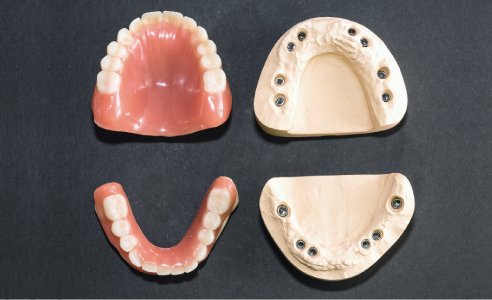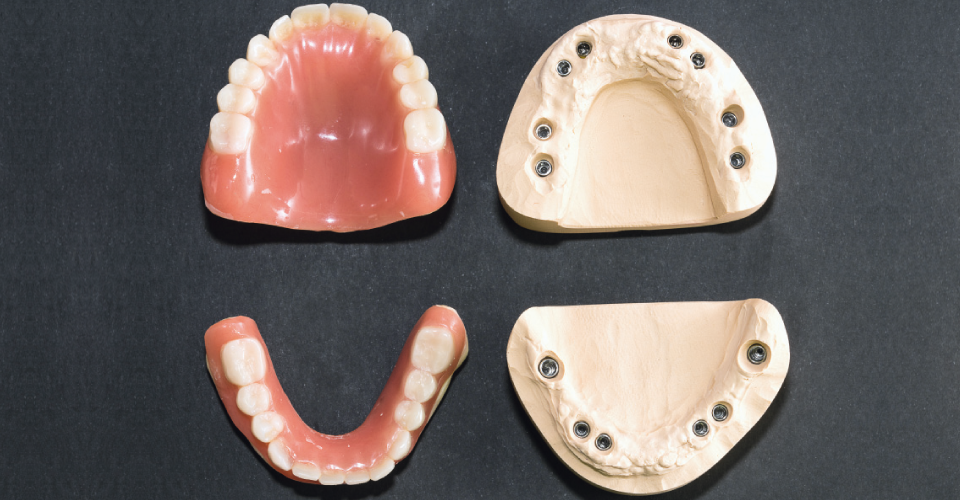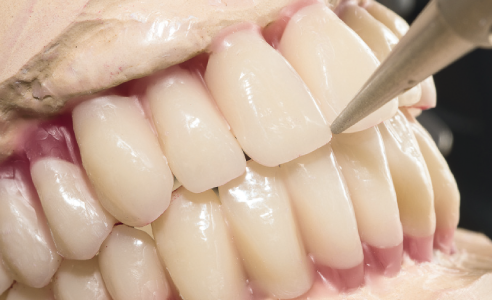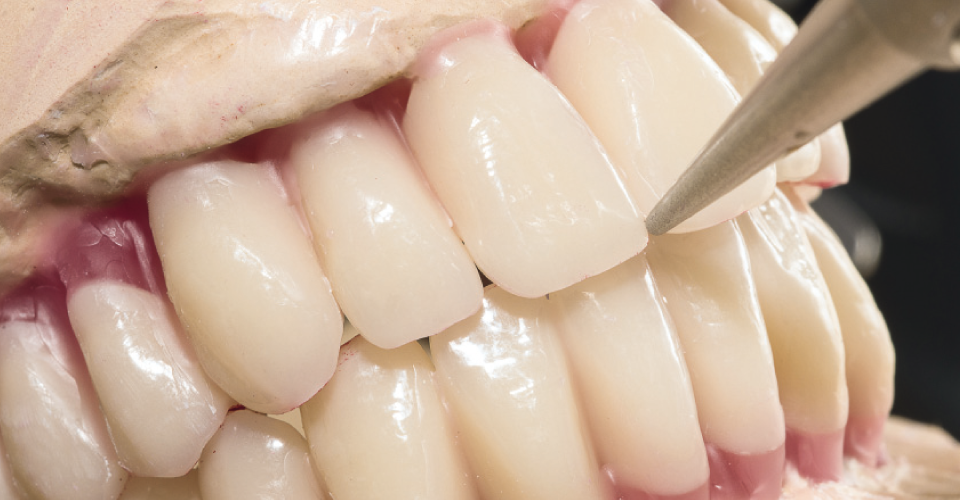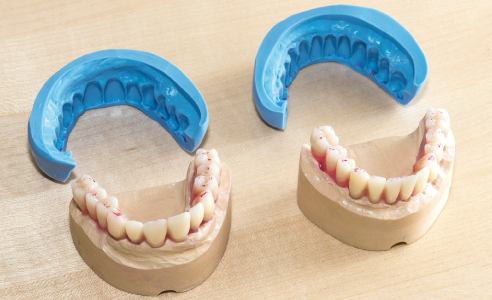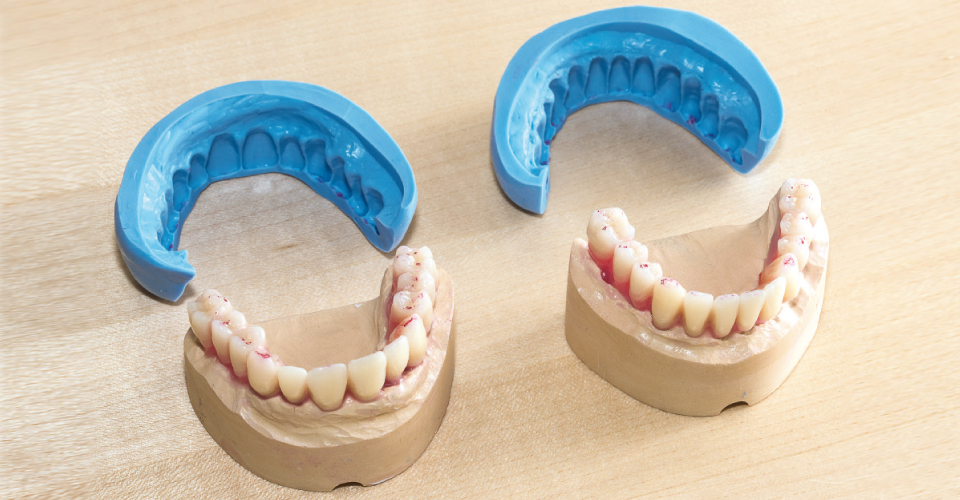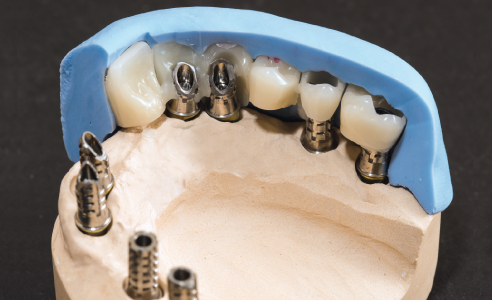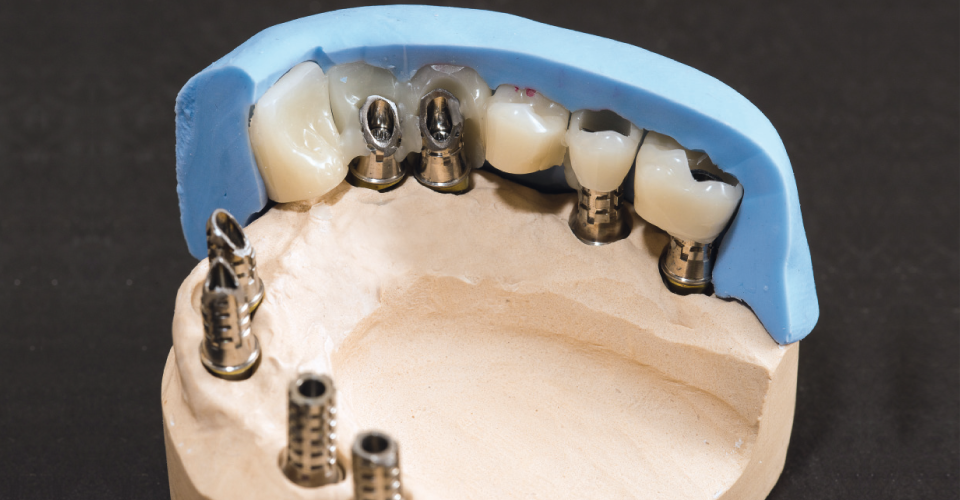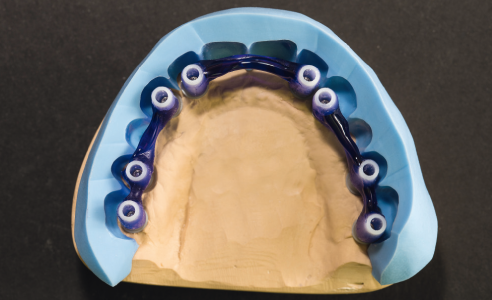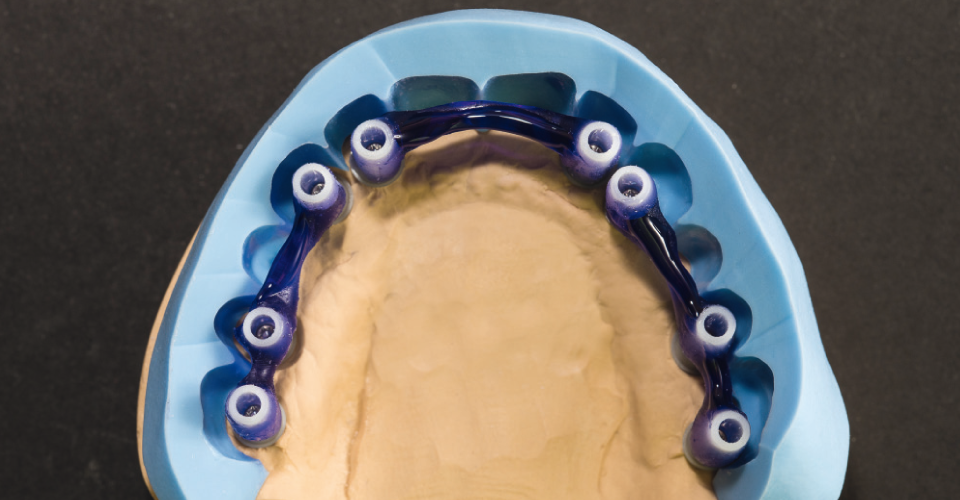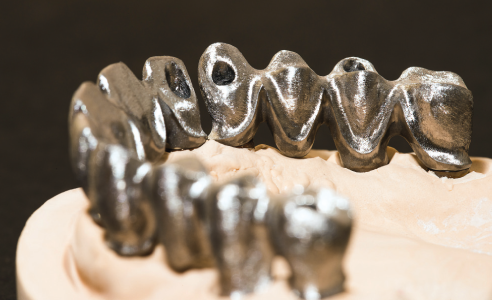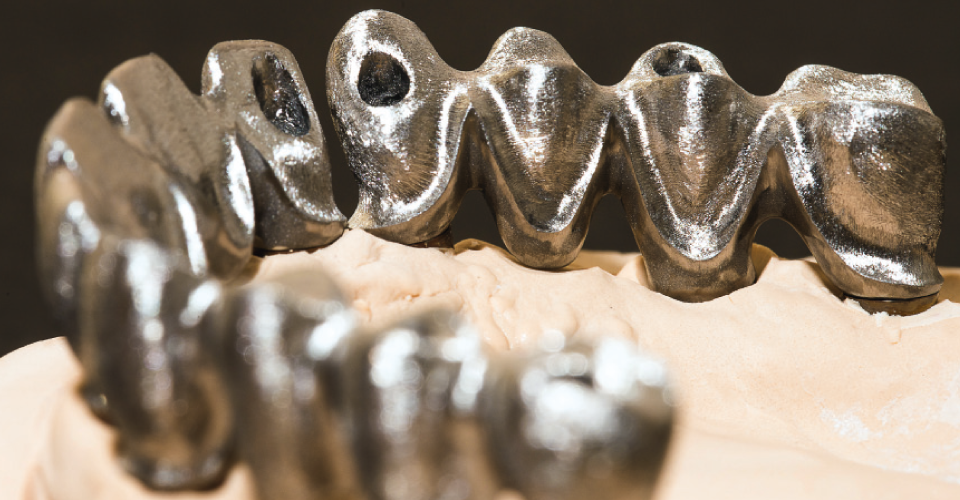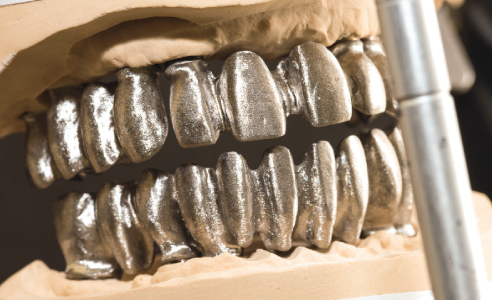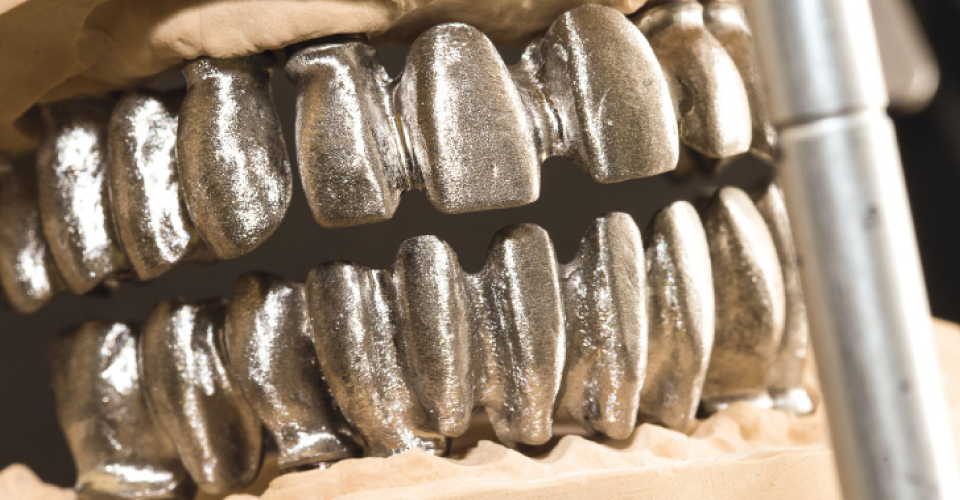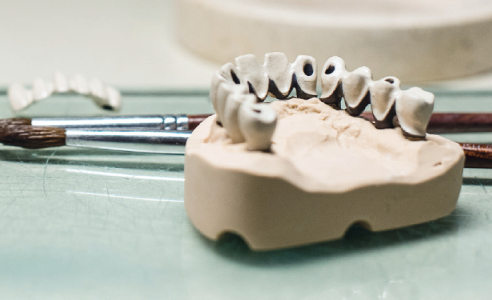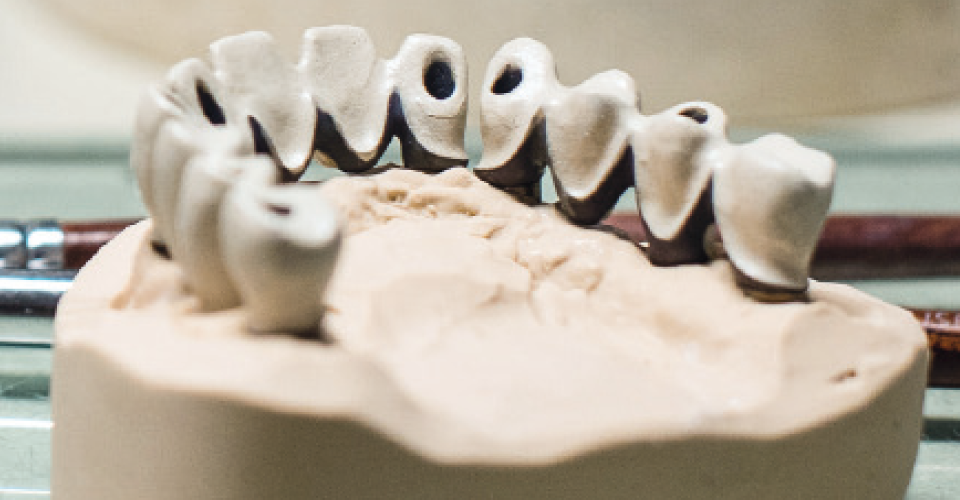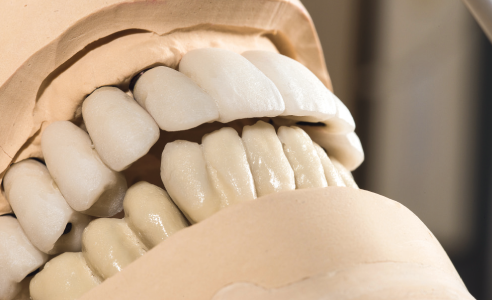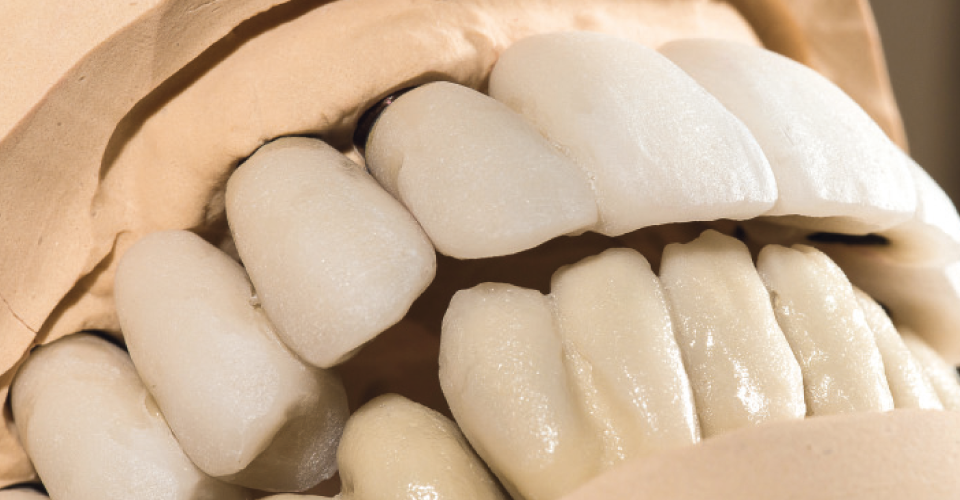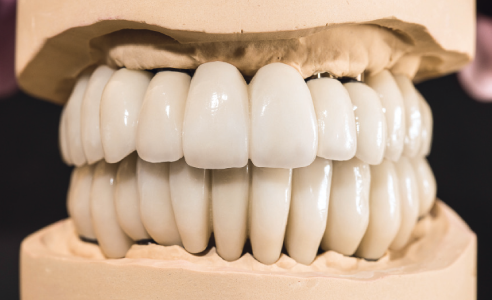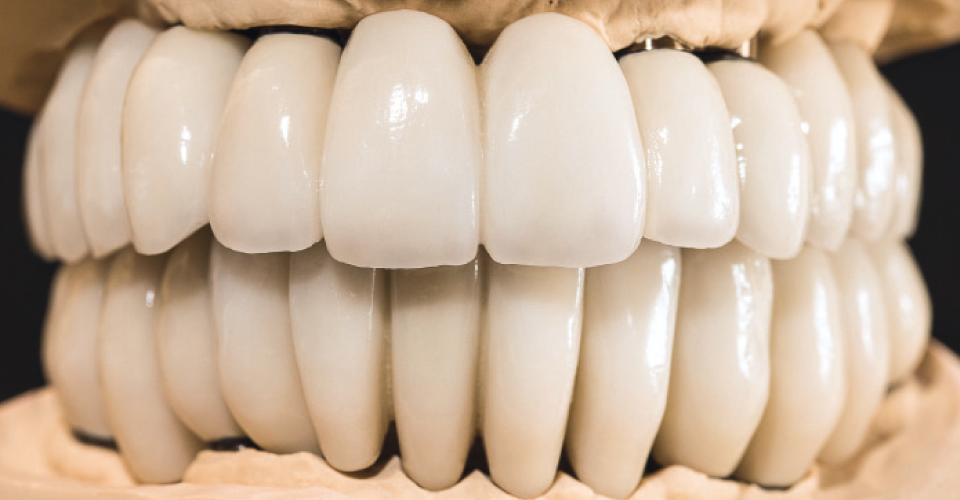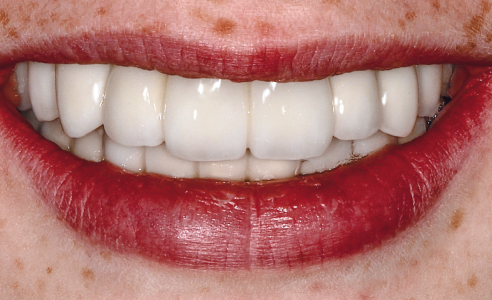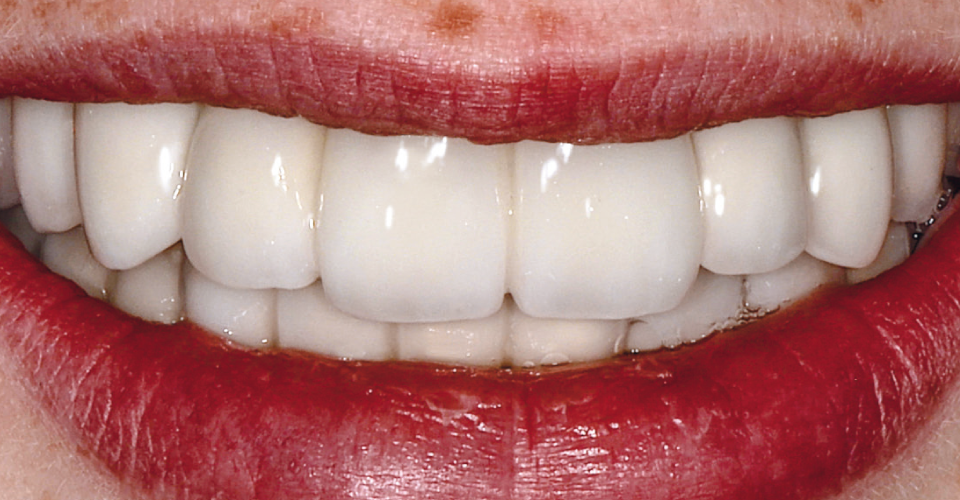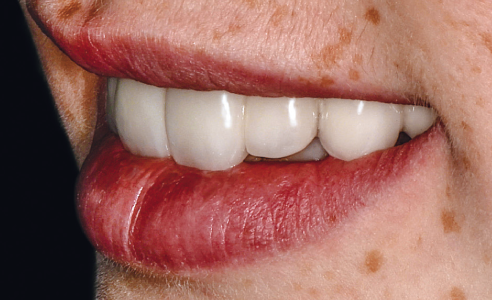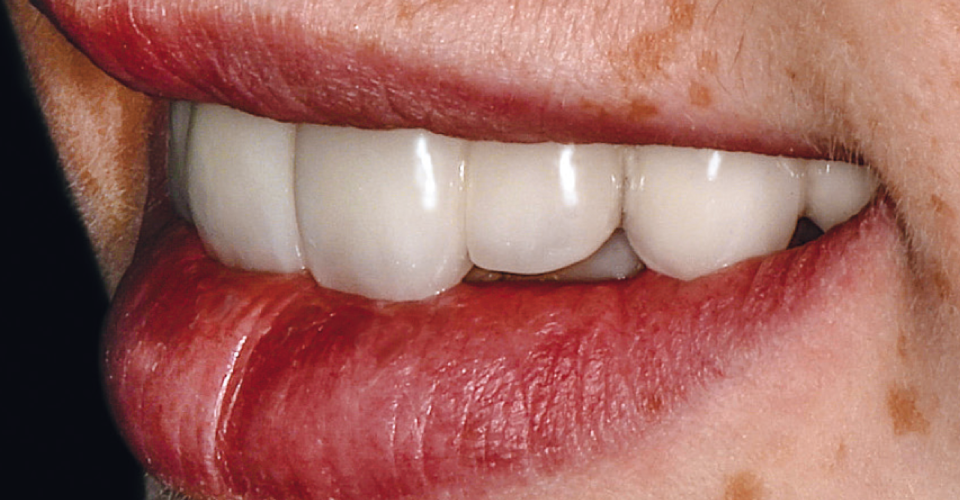Gold-palladium framework efficiently veneered with VITA VM 13 metal ceramics
Complete tooth loss can create a stressful and emotional situation, particularly for young patients. In these cases, the challenge is to offer the patient an age-appropriate, esthetic restoration with reliable long-term stability. VMK restoration (VITA metal ceramics) can be used in this case and is a proven material combination that has been used for many years in clinical situations. In the following case report, Master Dental Technician Cyril Perregaux (Geneva, Switzerland) shows the production of an implant-supported gold-palladium framework, which he veneered with VITA VM 13 (VITA Zahnfabrik, Bad Säckingen, Germany).
1. Clinical challenge
A 20-year-old patient suffered from a general tooth formation disorder. For this reason, all of the teeth in her upper and lower jaw had to be extracted under full general anesthetics. For the healing process, immediate prostheses were fabricated with VITA PHYSIODENS prosthesis teeth (VITA Zahnfabrik, Bad Säckingen, Germany) to give the patient a natural, young appearance. However, the prostheses also provided important prosthetic information for the planned permanent, implant-supported rehabilitation. After a healing phase of several months, eight implants were inserted in the upper jaw and six in the lower jaw.
2. Set-up and fabrication of provisional material
After the shaping and bite registration, a new set-up with VITA PHYSIODENS enabled a precise prosthetic orientation, taking into account the implant positioning in the new, post-operative situation. With the vestibular and lingual silicone keys of the set-up, the prosthetic teeth could be adjusted to the temporary abutments screwed on to the master model. Using the vestibular and lingual silicone keys, the set-up was transferred to plastic and inserted as a long-term provisional restoration.
3. Framework completion and veneering
After several weeks of adjustments, new fixation molds were taken to produce a master model. The articulation was carried out in a similar way to the provisional bridges. The framework was also modeled and cast in wax using the silicone key. Successively controlled by means of a silicone key, the finished bridge frameworks were finally veneered with VITA VM 13. Cyril Perregaux recommends: "Before the blending is complete, a clinical try-in should be carried out in order to prevent any possible issues such as interfering contacts. This minimizes the risk of cracks occurring after insertion through milling."
4. Seating and final results
All six bridges were screwed in intraorally and the screw channels were sealed with a composite. The gold-palladium framework provided a solid and economical solution. VITA VM 13 allowed for a highly esthetic and age-appropriate veneering. Meticulous planning and regular clinical testing were the key factors for success. The young patient was very satisfied with the final results of the treatment.



